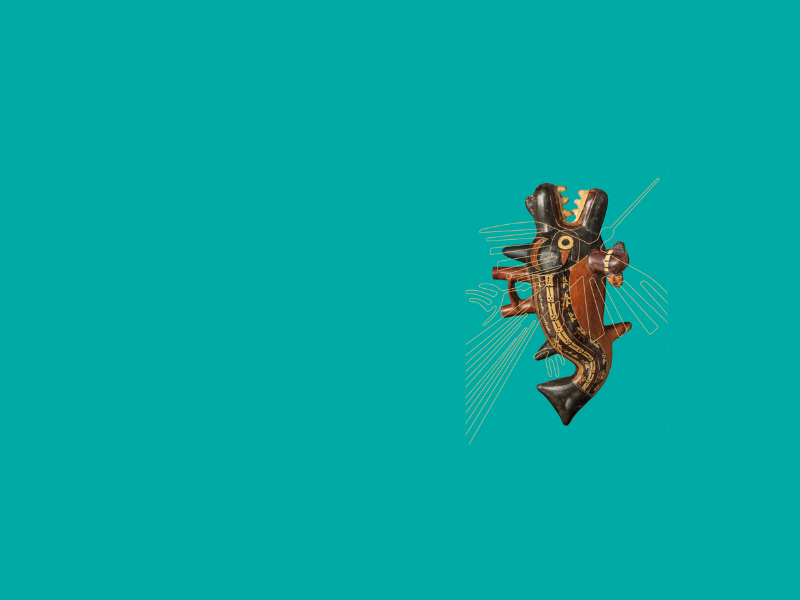At the Rietberg Museum, 14 April, twelve enthusiastic Members enjoyed lunch, the guided tour of this fantastic exhibition, and later on tea in the sunny Museum Courtyard. We are very grateful to George Russell for writing this vivid description of the Exhibition.
The Nasca lived in one of the driest areas of the world, in the south of Peru between the Andes foothills and the Pacific, from approx. 200BC. They were finally driven out by drought around AD650 when they disappeared without trace. It was from the air, starting in the 1920s, that the discovery took place of the so-called Nasca lines (geoglyphs) – straight lines (some 20-30 miles long without the slightest irregularity), geometric patterns and also lines forming distinct animal shapes, some as large as a football field. They had been made by scraping away the desert’s surface layer and exposing the lighter-coloured sand underneath. Why remains a mystery! These lines have been preserved both thanks to their isolation and because of the dry, windless and stable climate of that desert plateau. Graves are the richest source of Nasca artefacts. Their finely worked pottery vessels were thin-walled and glazed both inside and on the outside. Distinctive forms include double-spouted containers with a single handle. Bowls, beakers, jars, effigy drums and panpipes were also common. The Rietberg also showed superb examples of their textiles, which survived remarkably well in the extremely dry climate. Bodies were often wrapped in woollen blankets. The blankets on display had been knitted without the slightest flaw and then embroidered with almost microscopically-small, three-dimensional coloured figures. Superb! But we don’t have a clue as to what instruments they had to do this precision work.
This was a first-class, but also challenging exhibition, especially because it dealt with a culture about which most visitors know next to nothing. But our exceptional American guide made all the difference. She, namely, not only filled us in on details but, above all, also gave us that all-important background information!
George Russell

